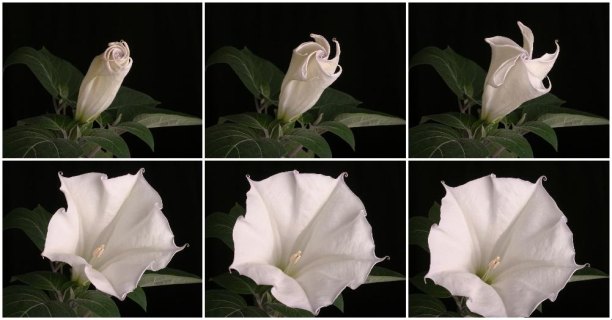This past week marked the anniversary of the passing of Dr. John Nash Ott (1901 – 2000). Dr. Ott was a true pioneer in the discovery of how full spectrum light can benefit the health of plants, animals and humans. Let’s reflect on Dr. Ott’s amazing career.
Time Lapse Photography
 John Ott started his career as a banker in Chicago. In his spare time, he dabbled in time-lapse photography, specifically photographing plants as they germinated from seed to full-growth. He would take photographs of plants opening and fruit ripening. No doubt if you ever taken biology in high school, you would know exactly what I mean. Photobiology was a relatively new field at the time, but Dr. Ott quickly mastered the practice of turning time-lapse photos into film. His early works were published on Chicago television and caught the eye of Walt Disney.
John Ott started his career as a banker in Chicago. In his spare time, he dabbled in time-lapse photography, specifically photographing plants as they germinated from seed to full-growth. He would take photographs of plants opening and fruit ripening. No doubt if you ever taken biology in high school, you would know exactly what I mean. Photobiology was a relatively new field at the time, but Dr. Ott quickly mastered the practice of turning time-lapse photos into film. His early works were published on Chicago television and caught the eye of Walt Disney.
In the 1950’s, Disney commissioned him to do several documentaries with time-lapse photography. Classic documentaries, such as Secrets of Life (1956), pioneered the use of time-lapse photography in nature films, a practice still in use today.
Full Spectrum Light and Plants
Dr. Ott found that by varying the amount of water and the color temperature of the lighting, he could manipulate flowering and fruit bearing. Dr. Ott even found a way to change the gender of plants by manipulating the color spectrum from lighting. His greenhouse experiments on the possible connection between full spectrum light and plant growth patterns were so impressive that Loyola University awarded him with a honorary doctorate in science.
Eventually, Dr. Ott left the banking industry and founded the Environmental Health and Light Research Institute to continue his studies into the ways in which light can, in the correct spectral balance, enhance the health of plants, animals, and humans. He also found that the absence of properly balanced light could lead to health disorders in people. He discovered that full spectrum light is as essential to people as it is to plants.
Full Spectrum Light and Health
Dr. Ott published his studies in the groundbreaking book Health and Light (1973). He introduced us to his theory of “malillumination”, a condition he likens to malnutrition. Malillumination, he theorized, is brought about by our unintentional limiting of our intake of full spectrum daylight by shielding ourselves from natural light with tinted windows, sunglasses, sun block, etc. and spending increased amounts of time in fluorescent lit environments. Fluorescent light does not produce a full spectrum of light.
Here is a quote from an interview in the 1980’s.
My studies have indicated that light is a nutrient, similar to all the other nutrients we take in through food, and that we need the full spectrum range of natural daylight. This is a fact long since proven by science. In 1967, a paper presented by three Russian scientists to the International Committee on Illumination said, “If human skin is not exposed to solar radiation (direct or scattered) for long periods of time, disturbances will occur in the physiological equilibrium of the human system. The result will be functional disorders of the nervous system and a vitamin-D deficiency, a weakening of the body’s defenses, and an aggravation of chronic diseases.”
He went on and founded his own successful lighting company to produce full spectrum light bulbs. His family business is still in operation today. After retiring into the Florida sunshine (which he soaked in for a minimum of one hour per day), Dr. Ott passed away in 2000.
What is truly impressive to me about Dr. Ott is that he had no formal college education. His banking employer enrolled him in some business courses, but he never studied biology, botany or physics. Yet through his own experimentation and keen scientific intellect he changed the way we look at the relationship between lighting and health.
Dr. Ott paved the way for companies such as ours. And we salute this great, self-made, self-educated man.
Resources:

I was in the Navy 1965 who was a student employee of Dr. Ott. He described some of his lab experiments will lighting on plants photographing their grow and the differences of growth with Music played 24 hours and different time exposure conditions. The Plants grew faster and larger with 24 hour lighting with different heights of growth. Also Dr. Ott did some tests on laboratory Rats exposed to lighting and music as well. Also Classical Musical won out over Rock Music. However Jazz had different and better grow than Rock Music. Also Television lighting made Caged Rats go crazy depending where the Television lighting was positioned. Like front of the Cage or top of Cages had different results. So much I learned from our friendship and he was only a working Student in Dr. Ott’s laboratory.
As I understand it, Ott believed in benefit from UV (at appropriate levels). Your company makes products that purposely “filter out” UV. Does your company not believe in the benefits Ott found to be conferred by UV?